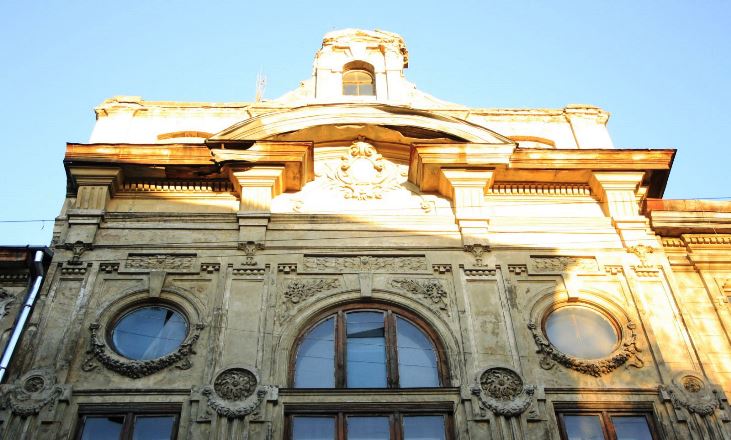The Jewish Museum in Lviv Needs to be Revived

An announcement of an initiative from the Ukrainian Civic Group for the Restoration of the Activities of the Jewish Museum in Lviv
The Jewish Museum in Lviv opened on 17 June 1934 in a Jewish community building located on Bershtein Street (today: Sholom Aleichem Street). The museum instantly became a notable phenomenon in the cultural life of multiethnic Galicia. The museum was home to an enormous collection of ancient Jewish ritual and everyday objects, paintings and graphics created by Jewish artists, books that were published before the second half of the seventeenth century, and numismatic and other unique collections of antiquities, all recounting the centuries-long material and spiritual heritage of Galician Jews stretching from the period of the Principality of Ukraine-Rus′ to the first half of the twentieth century.
Such leading Ukrainian cultural activists as Vasyl Shchurat and Ilarion Svientsitsky noted the museum’s important educational activities. One of the first visitors to the museum was [Ukrainian Greek Catholic—ed.] Metropolitan Andrei Sheptytsky, who presented the director of the museum Maximilian Goldstein with a number of ancient Jewish antiquities.
In early 1940 the communist regime liquidated the Jewish Museum, and its holdings were transferred to the collections of the Industrial Museum and other museums in Lviv.
During the Nazi occupation, thanks to Svientsitsky, who personally interceded with the Governor General of Galicia, Goldstein (a former scholarly associate of the Industrial Museum since 1940) was allowed to reside outside the ghetto and organize the collections of Jewish antiquities held in the museums of Lviv. Neither Svientsitsky nor Goldstein were aware that the German occupiers had decided to send the antiquities held at the Jewish Museum in Lviv to the city of Theresienstadt (Czechoslovakia), where the Nazis planned to open a special museum after the total destruction of European Jewry.
In February 1942 Goldstein and his family were sent to the Janów concentration camp, and the Jewish antiquities were delivered to the Industrial Museum (today: the Andrei Sheptytsky National Museum in Lviv) to be packed for shipment to Theresienstadt.
Ukrainian employees of the museum, risking their lives, saved these priceless artifacts by hiding them in a secluded corner in the basement of the Industrial Museum. In 1944 these Lviv patriots visited Pavlo Zholtovsky, the director of the newly created Museum of Ethnography and Arts and Crafts in Lviv, and presented him with the antiquities that they had saved.
In 1948, after the Central Committee of the Communist Party of the Soviet Union issued the notorious resolution “On the Struggle against Rootless Cosmopolitanism,” Zholtovsky received an order to destroy all Jewish artifacts. The distinguished Ukrainian scholar, risking his freedom and life, issued to the NKVD [secret police—ed.] a false certificate attesting to the destruction of the antiquities, and then hid them in the attic of the museum. The people of Lviv discovered the twice-saved collection only in 1990, when the art historian Dr. Faina Petryakova unveiled an exhibit dedicated to the Jewish material and spiritual heritage.
It is high time to reopen the Jewish Museum in Lviv in the building where it was located until 1940 (No. 12 Sholom Aleichem Street; the building is presently empty and in a decrepit state), and where cutting-edge methods of presenting the following themes would be applied: the history of Galician Jewry and its links with the Ukrainian people; the Jews’ participation in the Western Ukrainian National Republic (ZUNR) and the Ukrainian peoples’ liberation struggles in the ranks of the Ukrainian Galician Army and the Jewish Fighting Battalion; as well as the tragedy of the Holocaust and an account of Ukrainians named as Righteous Among the Nations. The new museum would also be home to large collections of Jewish antiquities.
In the eyes of the international community, the reactivation of the Jewish Museum in Lviv will serve as further proof that the consequences of the decisions of totalitarian regimes, which had such tragic repercussions for multinational culture, are being decisively overcome in Ukraine. The renewal of the Jewish Museum’s activities will also have a significant impact on the growth of international tourism to Lviv. Most importantly, it will offer solid evidence of the Independent Ukrainian State’s democratic development.



















